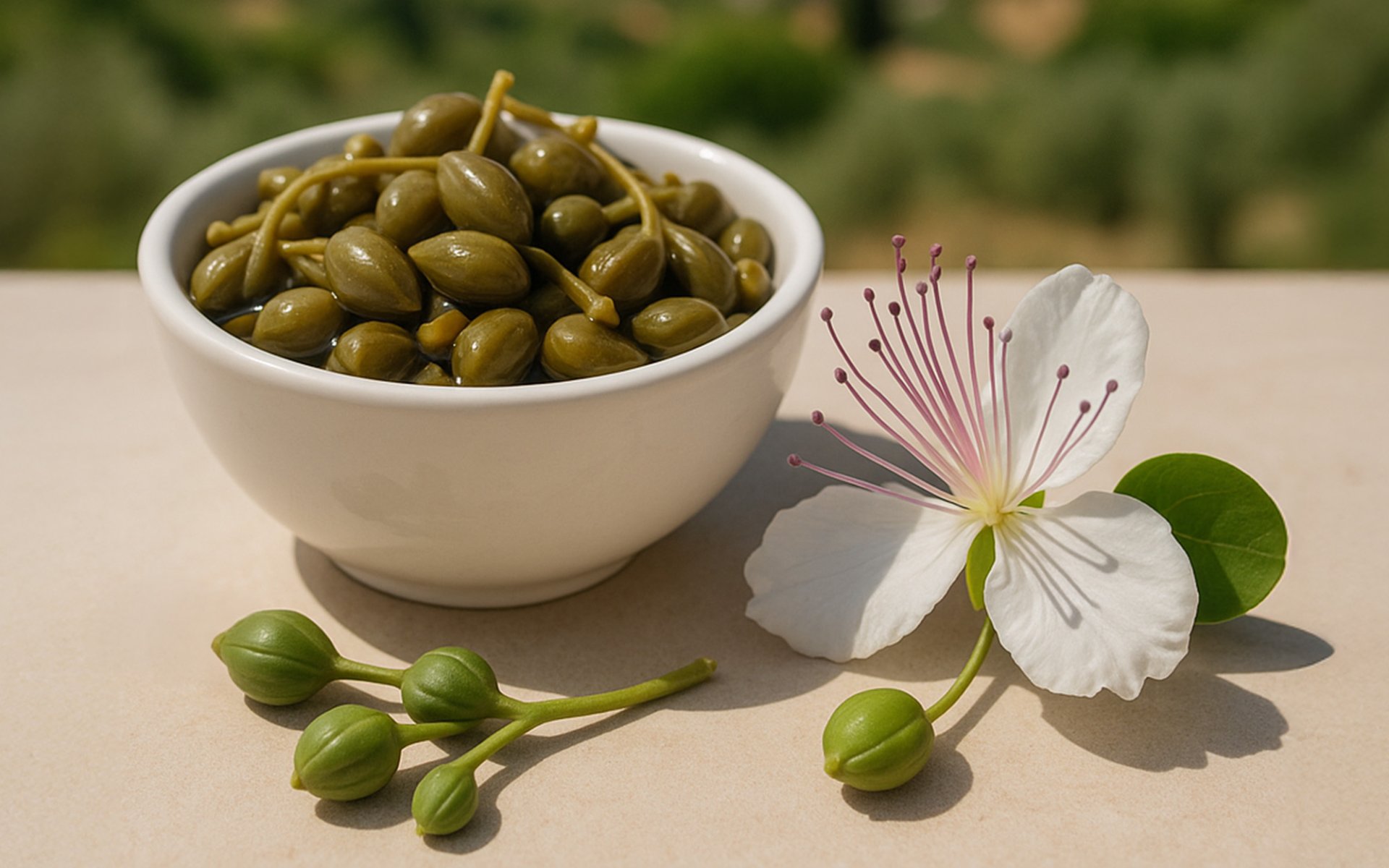Capers
Last updated: 19 Aug 2025

Capers are the edible flower buds of the Capparis spinosa plant, a hardy shrub that thrives in hot, dry climatesespecially along the Mediterranean coastlines of countries like Italy, Spain, and Greece. The plant is easily recognized by its rounded, succulent leaves and white to pale pink flowers. The capers we enjoy in cooking are harvested while the buds are still young and tightly closed, before the flowers bloom.
The process begins by cleaning freshly harvested buds and lightly drying them. They are then pickled in salt brine or vinegar for several weeks. This fermentation and curing process produces the signature flavor of capersbright, salty, and slightly tangy, with a taste often compared to lemon and green olives, but with a uniquely fresh and aromatic character.
Today, capers are commonly used to balance rich and oily dishes. They are added to sauces, salads, pizzas, and seafood to introduce a bright, briny note that enhances overall flavor. Classic recipes such as Spaghetti Puttanesca, smoked salmon, and Tartar sauce often feature capers as a key ingredient.
Modern research has found that capers are rich in antioxidants and flavonoids. These natural compounds have antibacterial and anti-inflammatory properties. For this reason, caper extracts are also used in skincare products to help reduce redness, strengthen the skin barrier, and promote a healthy complexion.
You can find high-quality capers at all Rimping Supermarket branches.
An Ancient Ingredient with Rich History
The use of capers dates back to ancient Greek and Roman civilizations. Both cultures knew how to preserve the flower buds in brine or vinegar, turning them into a tangy and salty condiment. Capers were used to stimulate the appetite and enhance the flavor of various dishes.The process begins by cleaning freshly harvested buds and lightly drying them. They are then pickled in salt brine or vinegar for several weeks. This fermentation and curing process produces the signature flavor of capersbright, salty, and slightly tangy, with a taste often compared to lemon and green olives, but with a uniquely fresh and aromatic character.
From Medieval Trade to Culinary Staples
Over the centuries, capers became more widely knownespecially during the Middle Ages, when maritime trade between regions helped spread ingredients across Europe. Capers were embraced by many Mediterranean cuisines, becoming popular in dishes from Italy, Spain, Greece, and France.Today, capers are commonly used to balance rich and oily dishes. They are added to sauces, salads, pizzas, and seafood to introduce a bright, briny note that enhances overall flavor. Classic recipes such as Spaghetti Puttanesca, smoked salmon, and Tartar sauce often feature capers as a key ingredient.
Beyond the Kitchen: Medicinal and Cosmetic Uses
Historically, capers have also been valued for their medicinal properties. In countries like Iran, the fruit and root of the plant have been used in traditional remedies for ailments like malaria and hemorrhoids. In Pakistan, the leaves are used to relieve pain and aid detoxification.Modern research has found that capers are rich in antioxidants and flavonoids. These natural compounds have antibacterial and anti-inflammatory properties. For this reason, caper extracts are also used in skincare products to help reduce redness, strengthen the skin barrier, and promote a healthy complexion.
A Staple in Mediterranean Kitchens
Capers remain an essential seasoning in Mediterranean cuisine. Their ability to elevate flavors makes them a favorite among chefs and home cooks alike. Whether enhancing a rustic pasta dish or brightening a seafood recipe, capers bring a touch of heritage and vibrant taste to every bite.You can find high-quality capers at all Rimping Supermarket branches.
Related Content
Get to Know Green Bean Casserole, a Simple Dish That Has Become a Symbol of the Thanksgiving Holiday
Understanding Sugar Cookies A Beloved Sweet Treat Enjoyed Across the World, from the United States and Europe to Asia


